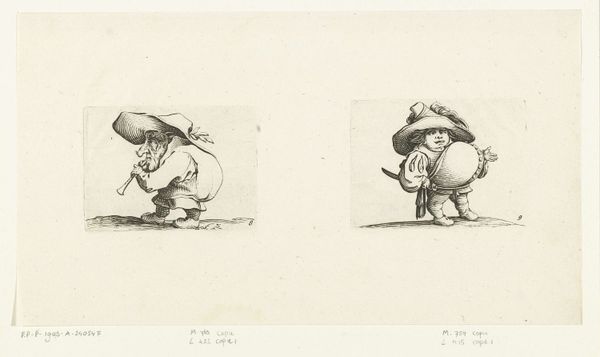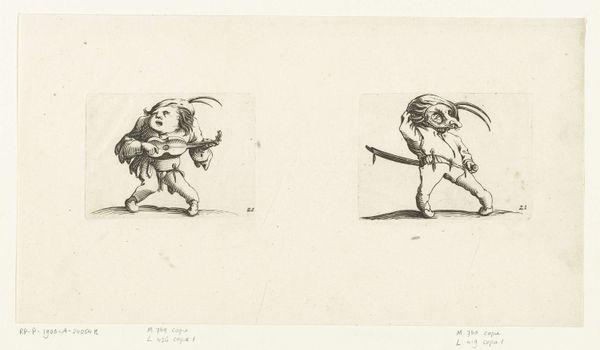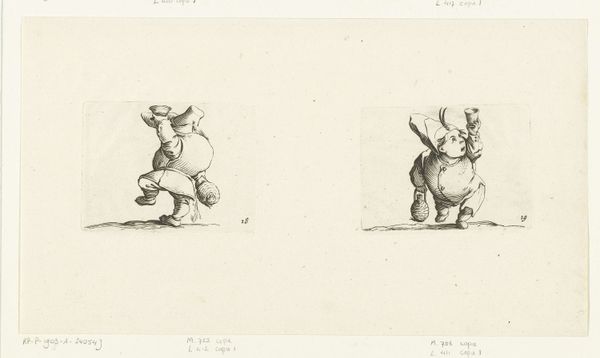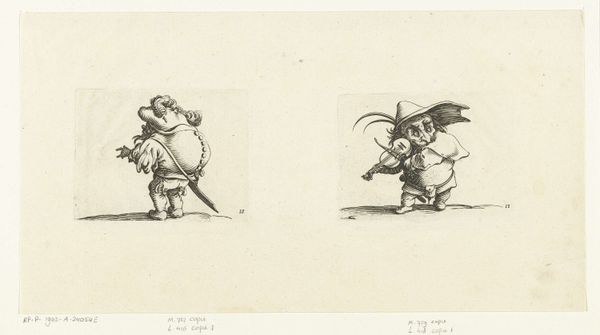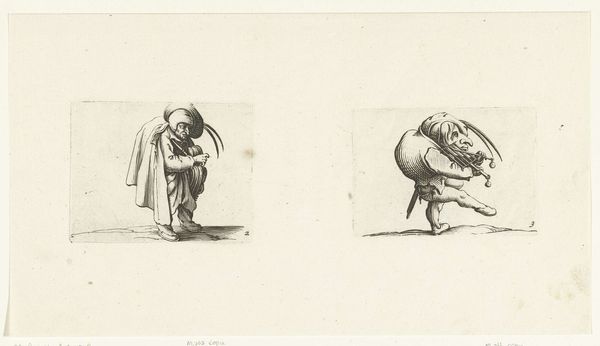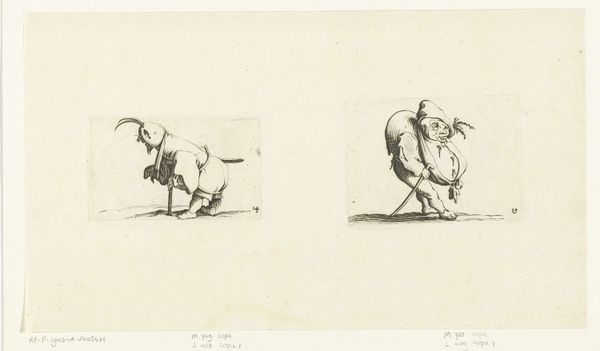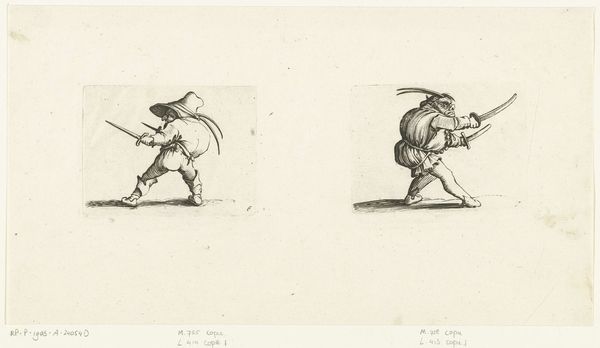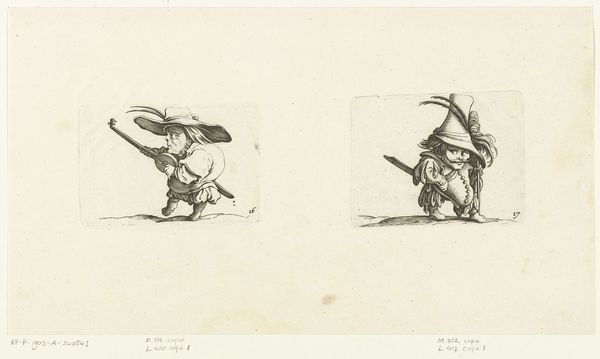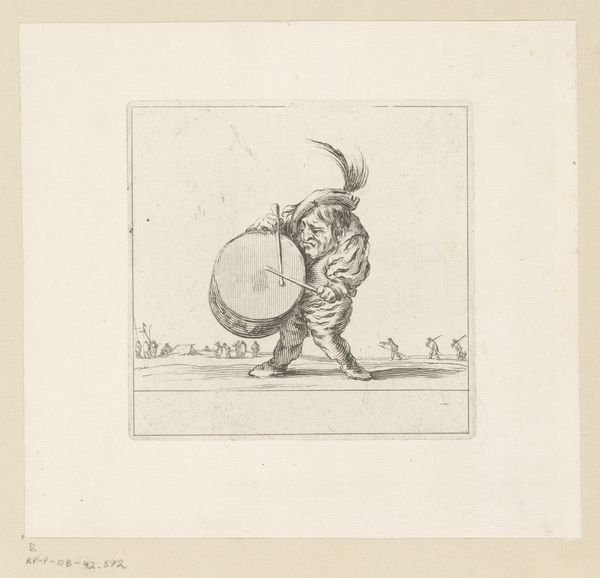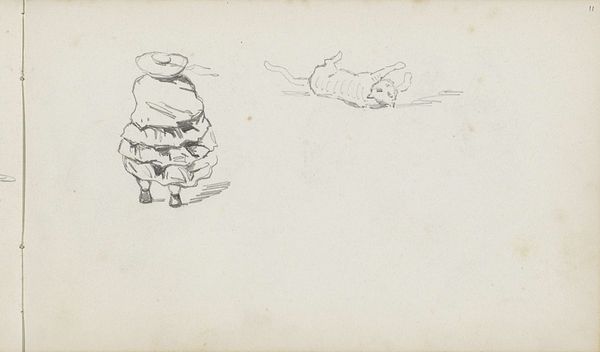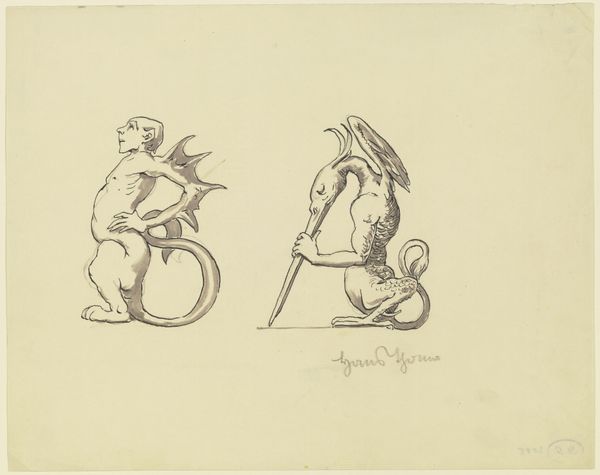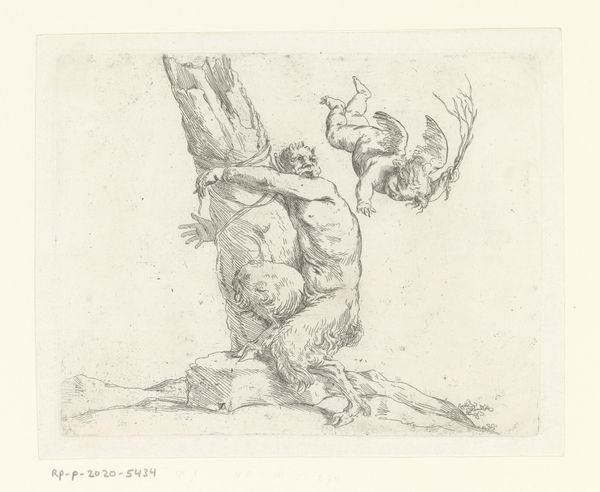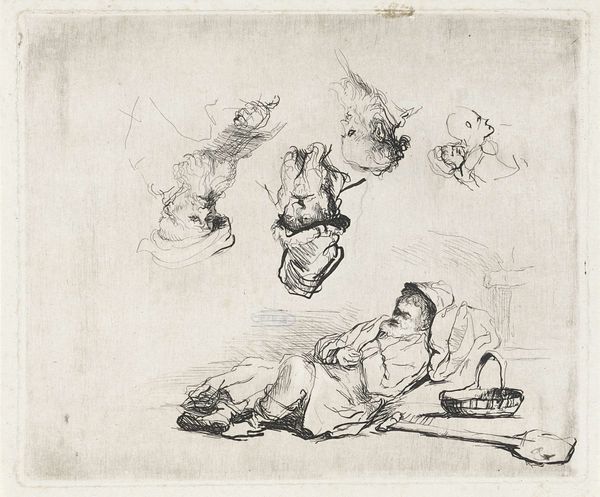
Dwerg met kruk en beensteun; Dwerg met zwaard, in aanvallende houding 1621 - 1676
0:00
0:00
drawing, print, etching
#
drawing
#
comic strip sketch
#
imaginative character sketch
#
quirky sketch
#
baroque
# print
#
etching
#
caricature
#
cartoon sketch
#
figuration
#
personal sketchbook
#
idea generation sketch
#
ink drawing experimentation
#
sketchbook drawing
#
storyboard and sketchbook work
#
sketchbook art
Dimensions: height 60 mm, width 83 mm, height 58 mm, width 87 mm, height 151 mm, width 279 mm
Copyright: Rijks Museum: Open Domain
Editor: Here we have Abraham Bosse's etching, "Dwerg met kruk en beensteun; Dwerg met zwaard, in aanvallende houding," likely created sometime between 1621 and 1676. The contrast between the figures' stooped postures and their intended actions is striking. What stylistic choices are notable here? Curator: Let us consider the linearity of the figures. The etching, as a medium, inherently lends itself to a strong emphasis on line. Notice how Bosse utilizes this characteristic to delineate the contours of the figures, defining their forms and postures with remarkable precision. The density of lines is very intentional. Editor: You’re right, I notice now how the thickness and closeness of lines help suggest areas of shadow and volume on their forms, even with the lack of color. Curator: Indeed. The interplay between the positive space occupied by the figures and the negative space surrounding them is crucial. Ask yourself, how does the arrangement of these elements within the frame contribute to the overall compositional balance? Editor: I see how the figures occupy distinct, separate spaces, almost like panels in a comic. Does this separation contribute to a narrative reading? Curator: It could. It certainly highlights the independent existence and inherent characteristics of each figure. Though similar, their compositional roles are separate, do you agree? Editor: That's a great way to put it. Considering the line work, space and composition allows us to think about these sketches in a whole new light. Curator: Indeed. These elements of form speak to the larger artistic vocabulary. By recognizing this, our analysis may attain greater precision.
Comments
No comments
Be the first to comment and join the conversation on the ultimate creative platform.
